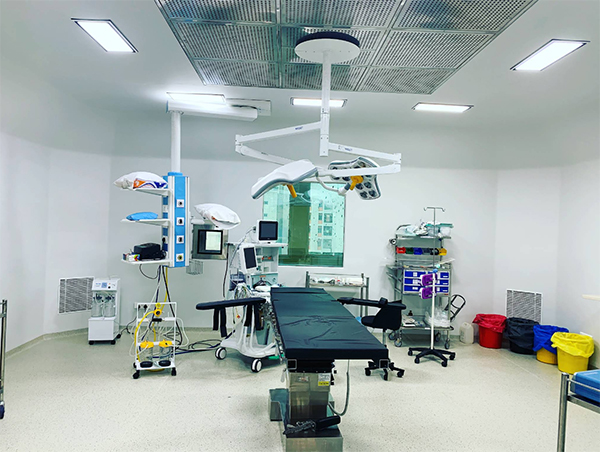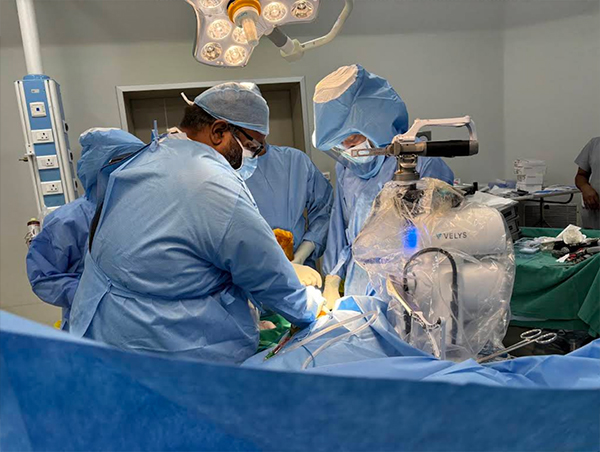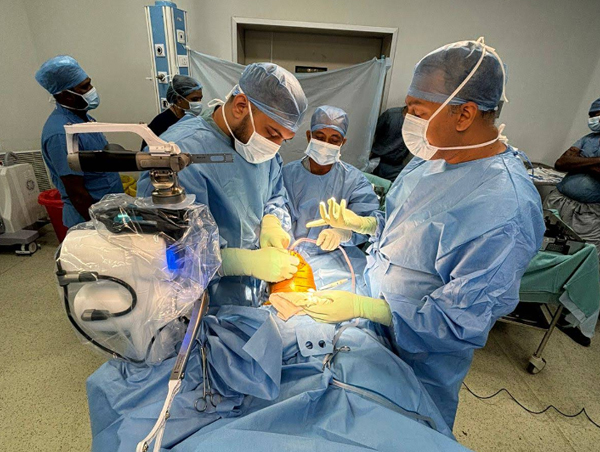You deal with joint discomfort along with arthritis symptoms and musculoskeletal pain which reduces your capacity to move. Time has arrived to analyze robotic-assisted surgery advantages. A Robotic Orthopaedic Surgeon enables accurate minimal surgical interventions to create faster healing along with lower discomfort and superior final results. This article outlines robotic orthopaedic surgery operational methods along with its advantages and shows when it becomes an ideal option.
What is a Robotic Orthopaedic Surgeon?
Robotic Orthopaedic Surgeons function as highly qualified medical experts who embrace robotic surgical frameworks to execute joint restoration and repair surgical procedures. Compared to traditional surgeries robotic-assisted procedures create minimal invasion through the body because they require smaller incisions thus reducing postoperative recovery time. These surgical systems enhance the accuracy of implant and incision placement which results in reduced bodily trauma because of smaller surgical cut sizes.
The robotic systems combine modern technology to offer surgeons immediate imaging that facilitates better clinic decisions while performing procedures. The method proves most advantageous during knee replacement surgery along with hip replacement surgery and shoulder replacement procedures.
Why Choose a Robotic Orthopaedic Surgeon?
When selecting a robotic orthopedic surgeon your surgical experience will undergo major positive changes. Patients choose robotic-assisted surgery because of multiple convincing benefits.
Enhanced Precision
A robotic surgery system enables doctors to produce precise implant placement and incision cutting. The surgical robots maintain consistent hand movements that the system adjusts in real-time. The precise surgery implementation ensures both a reduction of complications and meets surgeon specifications exactly.
Less Pain
Robotics-based surgical techniques minimize tissue destruction because they cause only minimal invasiveness during surgical procedures. Robot-assisted surgeries produce reduced pain which both patients encounter during surgery and after surgery ends. The targeted surgical operation performed by Robotic Orthopaedic Surgeons requires small disruptions which leads to fast recovery times alongside reduced post-operative discomfort.
Faster Recovery Time
People who undergo traditional surgery usually need multiple weeks to multiple months to recover. The main benefit of robotic surgery involves dramatic decreases to the amount of time needed for recovery. Through small openings and less invasive procedure patients experience shorter recovery time before returning to their usual activities. Many surgical patients reach their preoperative function levels only in a fraction of the time it takes normal surgical procedures.
Lower Risk of Complications
The application of robotic technology reduces medical mistakes that occur during orthopaedic procedures. The technological precision improves planning and ensures better accuracy that helps prevent surgical complications such as implant misalignment together with blood loss and infection. Your Robotic Orthopaedic Surgeon accesses real-time data through the system to monitor your procedural condition thus increasing safety.
How Does Robotic Orthopaedic Surgery Work?
The procedure starts by conducting an extensive consultation step. Before performing robotic surgery your Robotic Orthopaedic Surgeon conducts an examination to establish if you qualify for this procedure. Through advanced imaging technologies the surgeon creates precise plans for surgery development.
The surgeon controls the robotic system for performing exact surgical procedures along with implant position while the surgery takes place. The surgery becomes more accurate and effective because the robotic system accepts real-time feedback to modify procedural elements while being operated by the surgeon.
Traditional surgical recovery times usually exceed those of robotic-assisted procedures after the procedure. Users undergoing surgery report reduced swelling combined with reduced discomfort while they initiate their physical therapy treatment at a progressed stage.
Benefits of Choosing a Robotic Orthopaedic Surgeon
Minimally Invasive
The procedure using robotics for surgery involves minimum invasiveness of the operation. Smaller incisions together with minimal bodily trauma enable doctors to reduce both infection risks and postoperative hospitalization periods. Patients experience quick recovery so they either leave for home immediately or within the next day after their surgery.
Personalized Treatment Plan
A Robotic Orthopaedic Surgeon paves your treatment approach by using preoperative imaging findings to personalize your surgery. Through the robotic system surgeons can adjust the surgical method in order to deliver optimized procedures that match individual patient anatomy. The main advantage of robotic-assisted surgery depends on its ability to generate unique surgical tactics for each patient.
Long-Lasting Results
Robotics systems achieve precise implant placement because of their method. Joint replacement implants survive longer when robotic surgeries are performed which decreases the necessity for later revision operations. Robot-assisted surgical patients achieve better long-term results compared to patients undergoing standard methods of surgery.
Quicker Return to Normal Activities
Robotic orthopaedic surgery leads patients to restore their normal activities more quickly after the procedure. Patients recover more quickly from robotic surgery because it enables them to resume their regular hobbies and work responsibilities at a faster rate.
Is Robotic Orthopaedic Surgery Right for You?
Before choosing orthopaedic procedures involving joint replacement you must seek advice from both an experienced Robotic Orthopaedic Surgeon to decide whether robotic-assisted surgery should be your treatment option. Your health condition severity and personal preference together with your current health status determine how you will make the treatment selection.
A patient seeking an invasive procedure combined with fast recovery along with superior long-term results could benefit most from robotic surgical interventions.
Conclusion
In conclusion, a Robotic Orthopaedic Surgeon offers a revolutionary approach to orthopaedic care. With enhanced precision, faster recovery times, and reduced risks, robotic-assisted surgery is transforming the way joint replacements and repairs are performed. If you are struggling with joint pain or musculoskeletal issues, speak to a qualified robotic orthopaedic surgeon today to explore how this innovative approach can help you heal faster and live a pain-free life. Follow us at Facebook.





